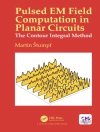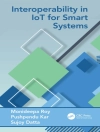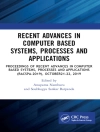Nowadays, the Internet is becoming more and more complex due to an everincreasing number of network devices, various multimedia services and a prevalence of encrypted traffic.
Therefore, in this context, this book presents a novel efficient multi modular troubleshooting architecture to overcome limitations related to encrypted traffic and high time complexity. This architecture contains five main modules: data collection, anomaly detection, temporary remediation, root cause analysis and definitive remediation. In data collection, there are two sub modules: parameter measurement and traffic classification. This architecture is implemented and validated in a software-defined networking (SDN) environment.
Tabla de materias
Preface ix
Introduction xi
Chapter 1 State of the Art on Network Troubleshooting 1
1.1 Network troubleshooting 1
1.1.1 State of the art 2
1.1.2 Traditional troubleshooting architecture 9
1.2 Background on encryption protocols 10
1.2.1 QUIC 11
1.2.2 Other protocols 16
1.3 Drawbacks of troubleshooting with encrypted traffic 18
1.3.1 Network performance monitoring 18
1.3.2 Intrusion detection system 20
1.4 Conclusion 22
Chapter 2 Novel Global Troubleshooting Framework for Encrypted Traffic 25
2.1 Novel network troubleshooting architecture for encrypted traffic 25
2.2 Proof of concept of novel troubleshooting architecture in SDN 28
2.3 Data collection 32
2.3.1 Data classification 32
2.3.2 Monitoring tools 34
2.3.3 Parameter measurement 37
2.4 Troubleshooting dataset 40
2.4.1 Datasets for root cause analysis 40
2.4.2 Dataset for traffic classification 42
2.5 Conclusion 43
Chapter 3 Traffic Classification: Novel QUIC Traffic Classifier Based on Convolutional Neural Network 45
3.1 Introduction 45
3.2 Background 48
3.2.1 Convolutional network 48
3.2.2 Characteristics of QUIC-based applications 49
3.3 Traffic classification approaches 50
3.3.1 Port-based approaches 50
3.3.2 Payload-based approaches 51
3.3.3 Statistic-based approaches 51
3.3.4 DL-based approaches 52
3.4 Novel traffic classification method for QUIC traffic 53
3.4.1 Traffic collection 55
3.4.2 Flow-based features 55
3.4.3 Preprocessing 56
3.4.4 Novel traffic classification method 56
3.5 Experimental results 59
3.5.1 Dataset specification 59
3.5.2 Performance metrics 60
3.5.3 Performance analysis 61
3.6 Conclusion 65
Chapter 4 Anomaly Detection 67
4.1 Introduction 67
4.2 Anomaly detection approaches 68
4.2.1 Knowledge-based mechanisms 68
4.2.2 Rule inductions 69
4.2.3 Information theory 70
4.2.4 ML-based mechanisms 70
4.3 Anomaly detection approach using machine learning 71
4.3.1 ML-based anomaly detection method 72
4.3.2 Data collection and processing 74
4.4 Experimental results 75
4.4.1 Experimental setup 75
4.4.2 Performance analysis 76
4.5 Conclusion 79
Chapter 5 Temporary Remediation: SDN-based Application-aware Segment Routing for Large-scale Networks 81
5.1 Introduction 81
5.2 Application-aware routing mechanisms 84
5.2.1 Application-aware routing 84
5.2.2 Application-aware MPLS 86
5.2.3 Application-aware SR 86
5.3 Adaptive segment routing mechanism for encrypted traffic 87
5.3.1 Overview of the SDN-based adaptive segment routing framework 87
5.3.2 Network monitoring 89
5.3.3 Anomaly detection 90
5.3.4 Application-aware remediation 91
5.4 Experimental results 95
5.4.1 Experiment setup 95
5.4.2 Benchmark 97
5.4.3 Performance analysis 97
5.5 Conclusion 104
Chapter 6 Root Cause Analysis and Definitive Remediation 107
6.1 Root cause analysis: machine learning based root cause analysis for SDN network 107
6.1.1 Introduction 107
6.1.2 Root cause analysis mechanisms 109
6.1.3 ML-based RCA mechanism 111
6.1.4 Experimental results 114
6.1.5 Conclusion 119
6.2 Definitive remediation: adaptive QUIC BBR algorithm using reinforcement learning for dynamic networks 121
6.2.1 Introduction 121
6.2.2 Congestion control mechanisms 123
6.2.3 Adaptive BBR algorithm 126
6.2.4 Experimental results 128
6.2.5 Conclusion 133
Conclusions and Prospects 135
References 141
Index 159
Sobre el autor
Van Van Tong is a lecturer at the School of Information and Communication Technology at Hanoi University of Science and Technology, Vietnam. His research interests include blockchain, cyber security, SDN and network troubleshooting.
Sami Souihi, HDR, is an Associate Professor in Computer Science in the N&T Department of Paris-Est Créteil University (UPEC), France, and is part of the Li SSi Tinc NET research team. His research focuses on adaptive mechanisms in large-scale dynamic systems, among others.
Hai-Anh Tran is lecturer researcher and Vice-Dean in the Faculty of Computer Engineering, So ICT at HUST, Vietnam. His research interests include computer networks, distributed systems, network security, Qo S, Qo E and Io T, ranging from the theory of design to implementation.
Abdelhamid Mellouk is a full-time Professor, the Director of the IT4H High School Engineering Department, UPEC, and Head of the Tinc NET research team in France. He is also the founder of Network Control Research and Curricula activities at UPEC, the current Co President of the French Deep Tech Data Science and Artificial Intelligence Systematic Hub, member of the High Scientific Research and Technology National Council and President of policies and programs commission, IEEE Com Soc CSR TC Award Chair.












